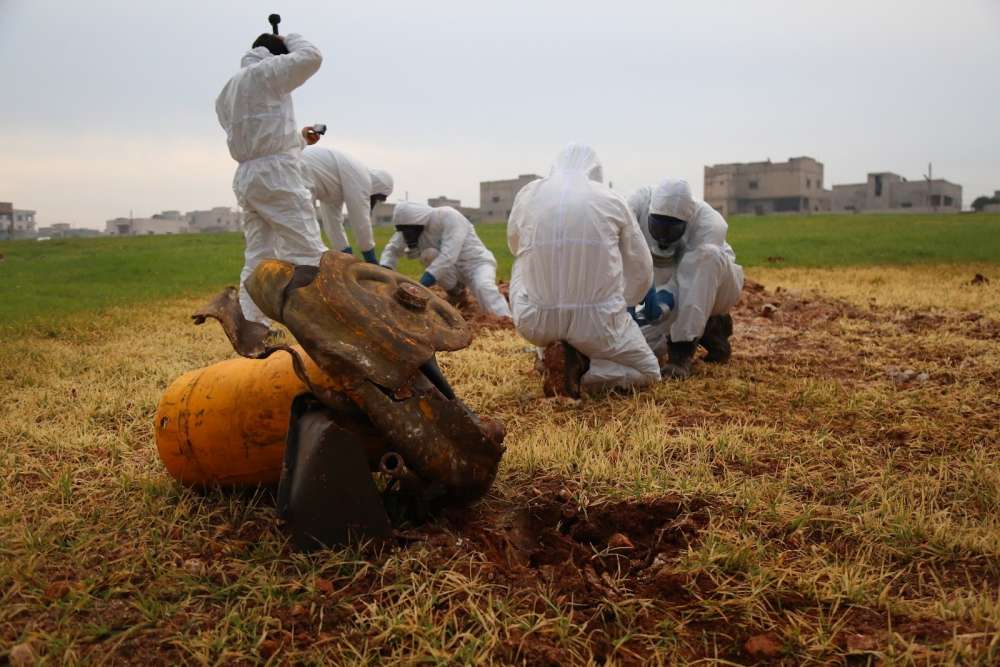Munitions Typology: Chemical Weapons Deployed in the Syrian War

In the aftermath of chemical weapons attacks, the remnants of munitions – ranging from small shards to large metal hulks – are usually the first and most important pieces of material evidence recovered from the scene. This is especially true in Syria, where most chemical attacks are executed using domestically produced munition designs, including weapons containing highly volatile and dangerous nerve agents. Whether spent or intact, munitions tell us a lot about the nature and evolution of the Syrian chemical weapons program as well as its operational integration into the government’s conventional war machinery.
In our review of hundreds of reported cases, we found that certain munitions are closely associated with specific attack patterns by Syrian government forces. These consistencies help us to pinpoint particular military units as the likely perpetrators of each attack. By examining these cases, we are able to connect material evidence recovered from attack sites across Syria to government forces as they move from front line to front line. For further details on the patterns of chemical weapons use, see our report Nowhere to Hide.
This munitions typology is based on a review of existing investigations into dozens of chemical weapons attacks as well as a collection of primary source imagery related to 53 incidents compiled by the research team. We aim to provide a reference guide for understanding the evolution of the Syrian chemical weapons complex. For those seeking justice for war crimes committed by the Assad regime, we hope this typology can serve as a starting point for investigators to draw connections between material evidence from impact sites and broader patterns of violations, as well as likely perpetrators of chemical weapons attacks. This typology is not exhaustive, but focuses on those munition types which have been attributed to specific chemical attacks and are backed by clear evidence.
Explore the interactive munitions typology online or download the PDF.







